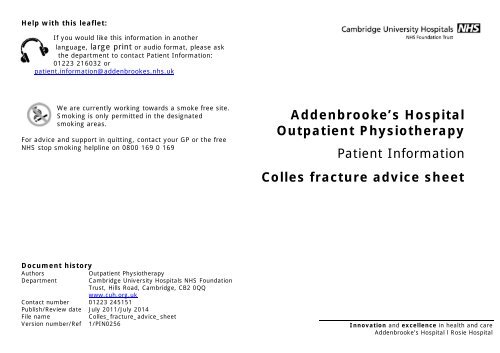

Patients with Colles fractures frequently present for medical attention and require a complete interprofessional team for comprehensive and optimal management. For example, patients who present to an emergency department interact with various medical personnel to get the required care. The orthopedic surgeon will often be the final destination for these patients, as this is often the optimal treatment to correct the injury however, they are usually not the patient's point of initial contact. Įssex Lopresti lesion: This is a rare combination of Galeazzi and Monteggia fractures involving a radial head fracture at the elbow with associated DRUJ disruption at the wrist and interosseous membrane disruption throughout the forearm. Monteggia fracture: Ulnar shaft fracture with associated radial head dislocation. Galeazzi fracture: Fracture of the medial or distal radius with associated dislocations of the distal radioulnar joint. Hutchinson or Chauffer fracture: Intra-articular radial styloid fractures are also known as Hutchinson or Chauffer fractures and usually present as oblique or transverse fractures to the radial styloid caused by direct trauma. Smith fracture: Often referred to as a “reverse Colles,” the Smith fracture involves volar (rather than dorsal) angulation of the distal radial fragment and is usually caused by a FOOSH in supination rather than in pronation.īarton fracture: A Barton fracture is another type of distal radius fracture that involves the dorsal rim of the distal radius, in which an oblique intra-articular fracture occurs. The differential diagnosis for Colles fractures includes other types of distal radius fractures, as well as other forearm fractures, each of which can be differentiated with radiographic imaging. In the elderly population (> 65 years), there is no difference in functional outcomes between non-operative versus operative treatments.Ĭlosed Reduction and Percutaneous Pinning (CRPP): Other criteria include severe osteoporosis or associated ulnar fracture. Displaced intra-articular fractures > 2mm. MRI is not a recommended diagnostic measure as the initial evaluation however, it may serve to assess ligamentous or soft tissue extents of these injuries, such as TFCC, scapholunate, or lunotriquetral ligament injuries.ĭistal radius fractures can be managed either non-operatively or operatively, depending on the fracture pattern and the patient profile.Ĭlosed reduction and immobilization with either splint or cast: This is indicated in extraarticular fracture with acceptable shortening ( 5 mm, dorsal comminution > 50%, volar or intraarticular comminution. ( Media 8)ĬT scan is mainly indicated to delineate an intraarticular fracture pattern and for surgical planning. A dorsal angulation < 5 degrees or within 20 degrees of the contralateral side is acceptable. Radial volar tilt: Normally is 11 degrees. ( Media 7)Īrticular step-off: The articular surface should be congruous. T he following radiographic parameters should be considered when assessing a wrist radiograph. ( Media 4 & 5 ) for AP and lateral radiographs of a typical Colle's fracture,

These radiographs help distinguish the type of injury among different types of forearm fractures to narrow down and make a diagnosis. PA and lateral views should be taken at a minimum to assess these injuries. Radiographs are usually the mainstay of evaluating, diagnosing, and initially managing these injuries. T he radial column ( radial styloid + scaphoid fossa): The distal radius has three columns radial, intermediate and ulnar columns. It has the following articulations scaphoid ( scaphoid fossa), lunate ( lunate fossa), and distal ulna ( ulnar or sigmoid notch). The distal radius bears 80% of the axial load. These distal radius fractures are often caused by falling on an outstretched hand with the wrist in dorsiflexion, causing tension on the volar aspect of the wrist, causing the fracture to extend dorsally. The term Colles fracture is often used eponymously for distal fractures with dorsal angulation.

The Colles fracture is defined as a distal radius fracture with dorsal comminution, dorsal angulation, dorsal displacement, radial shortening, and an associated ulnar styloid fracture.

Named after Abraham Colles, who first described a distal radius fracture in 1814 at the Royal College of Surgeons in Dublin, the Colles fracture is one of the most common fractures encountered in orthopedic practice representing 17.5 % (one-sixth) of all adult fractures presenting to the emergency department.


 0 kommentar(er)
0 kommentar(er)
